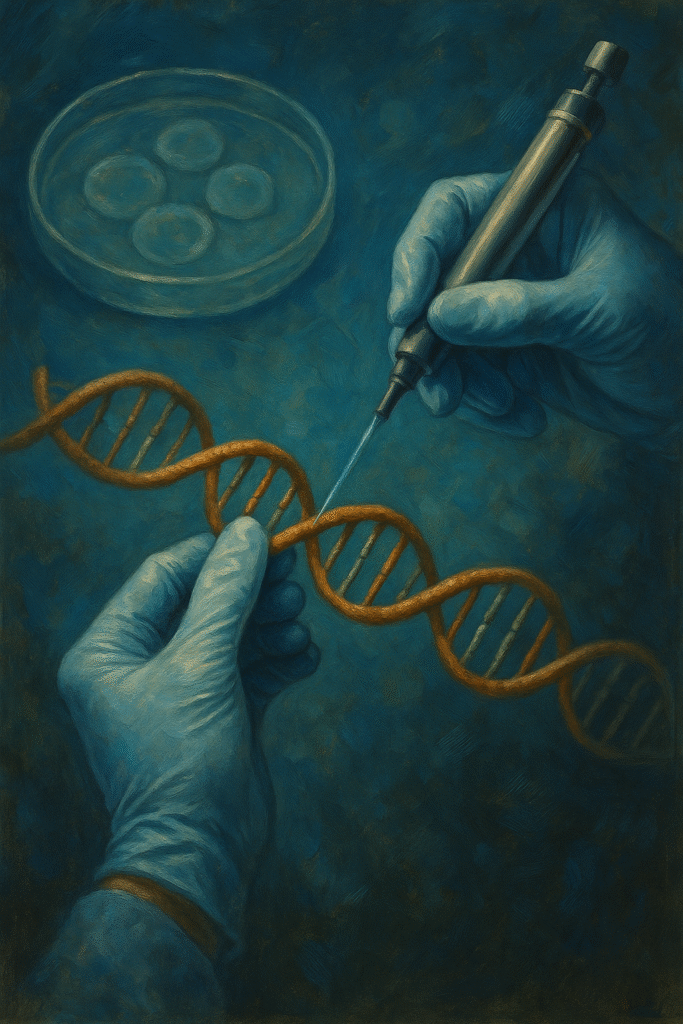CRISPR is a groundbreaking gene-editing tool, empowering scientists to alter DNA sequences precisely. This technique revolutionizes medicine and agriculture by enabling cures for genetic diseases and enhancing crop resilience. However, CRISPR raises ethical concerns about human genetic alteration and equitable access to advancements. Explore its impact, applications, and debates.
What is CRISPR and How Does It Work?
CRISPR is a gene-editing technology that allows precise DNA modifications by adapting bacteria’s natural defense mechanisms. Scientists use CRISPR components, such as the Cas9 protein and guide RNA, to target and alter specific DNA sequences efficiently. This method has transformative potential across various fields.
* Precision: Targets exact gene locations for edits
* Versatility: Applicable in diverse areas (medicine, agriculture)
* Efficiency: Speeds up genetic research and applications
Featured Applications of CRISPR in Medicine
CRISPR gene editing has catalyzed remarkable medical breakthroughs:
1. Gene Therapy: Treats untreatable genetic disorders like cystic fibrosis and sickle cell disease. According to Nature Medicine, trials have shown promising results.
2. Cancer Research: Alters cancer-related genes to improve treatment options.
3. Pathogen Resistance: Modifies mosquitoes to reduce malaria transmission.
CRISPR’s Role in Agriculture and Food Security
CRISPR impacts agriculture by advancing crop modification techniques:
* Crop Resilience: Improves resistance to diseases and climate change.
* Yield Enhancement: Increases production to meet global food demand.
* Sustainable Farming: Reduces need for chemical pesticides.
| CRISPR Application | Agricultural Benefit |
|---|---|
| Disease Resistance | Healthier crops |
| Pest Resistance | Reduced chemical reliance |
| Climate Adaptability | Higher yield in variable climates |
Ethical Considerations of Gene Editing
Gene editing brings moral debates and research regulation challenges:
* Safety Concerns: Long-term effects of genetic modifications are uncertain. The American Journal of Bioethics highlights the need for comprehensive evaluations.
* Equity in Access: How new treatments are distributed may worsen existing healthcare inequalities.
Emerging CRISPR Techniques and Innovations
Recent CRISPR advancements offer refined editing capabilities:
* Base Editing: Permits precise, single base changes without DNA breakage.
* Prime Editing: Alters genetic mutations with fewer errors.
Conclusion: Navigating CRISPR with Responsibility
As CRISPR technology advances, it holds immense potential for scientific and societal progress. Ethical frameworks and global cooperation are critical to harness its capabilities responsibly. Join the Global CRISPR Forum to stay informed and advocate for balanced innovation.
FAQs on CRISPR Gene Editing
Q1: How does CRISPR differ from traditional gene-modification methods?
A1: Unlike older methods, CRISPR notably enhances precision, efficiency, and versatility. It modifies genes without foreign DNA insertion, significantly reducing unintended consequences.
Q2: Can CRISPR be used to cure diseases?
A2: Yes, CRISPR has been instrumental in developing therapies for genetic disorders, cancers, and infectious diseases. Clinical trials are underway to solidify its applications.
Q3: What are the risks associated with CRISPR?
A3: Potential risks include off-target gene alterations and unforeseen long-term effects, necessitating rigorous testing and regulation before widespread use.


